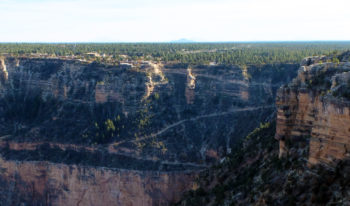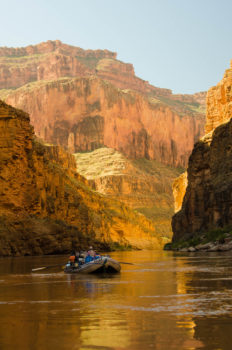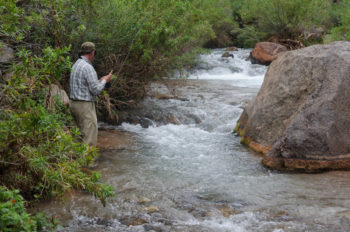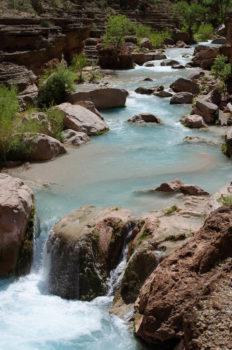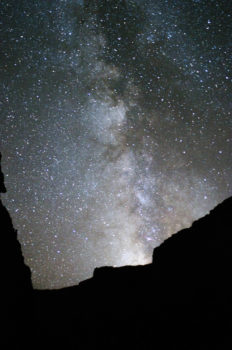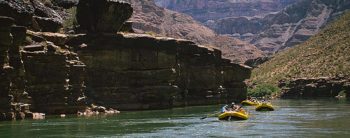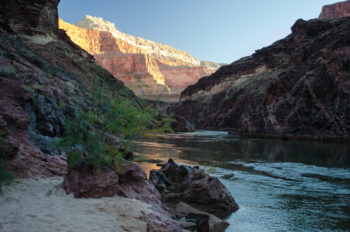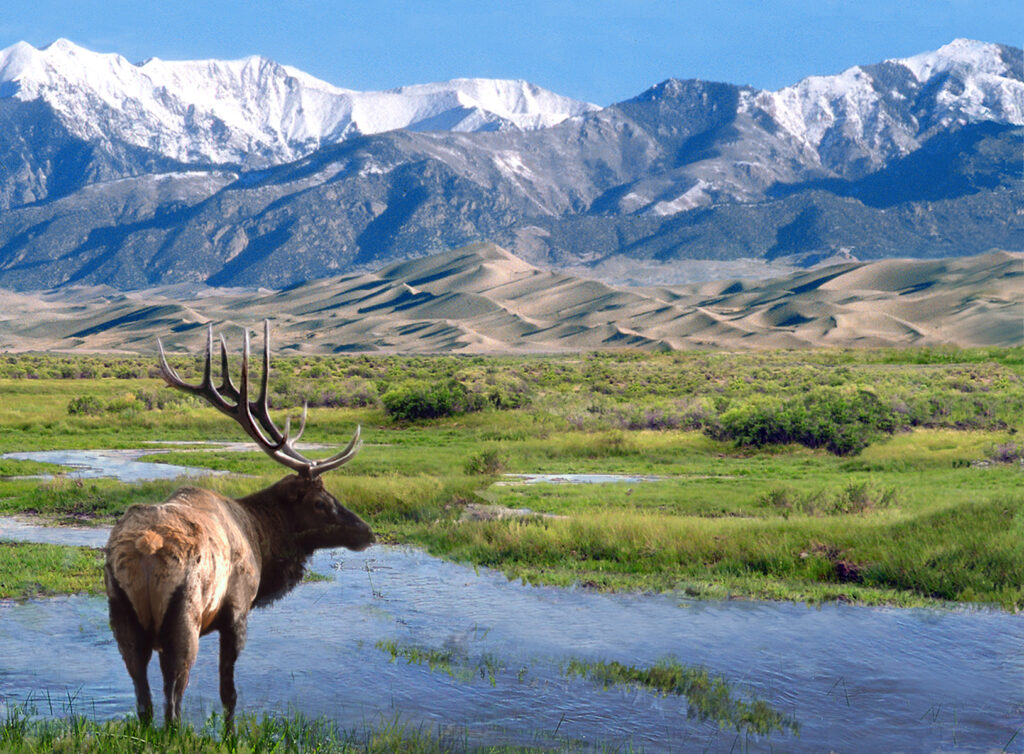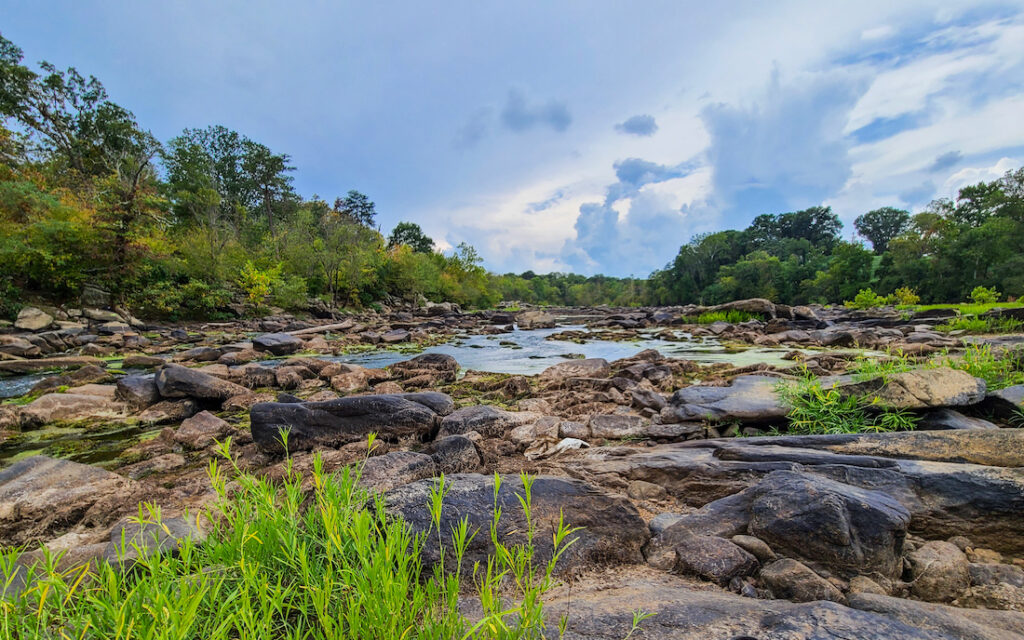Keeping the Canyon Grand
Quite time and solitude, with only the call of the Canyon Wren and the constant song of the river, the Colorado River in the Grand Canyon is a sacred place for those rafting down it.
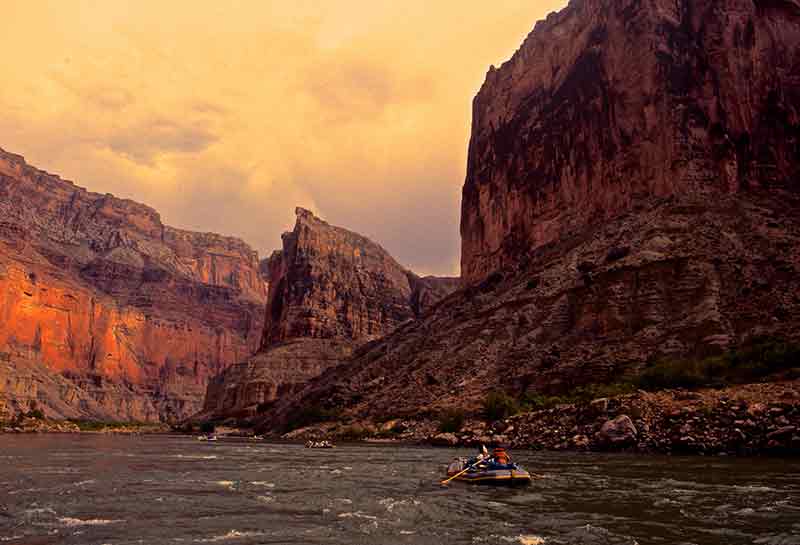
It goes without saying that the Grand Canyon is a special place.
I had the great fortune of spending 10 days with a variety of folks rafting down the Colorado River through this great American treasure recently. The trip was with oar boats, for my money the only way to travel the canyon. We did have a motor driven “Mothership”, a 37 foot raft that carried much of the food and other gear supporting the trip. The boats had already been on the river for seven days, coming down from Lee’s Ferry, and some of those travelers were continuing with us.
We rafted through many rapids, some the biggest in North America, but we also drifted through many more miles of calm water, slowly wandering among the magnificent rock temples built through many eons of Earth history. It was sublime.
The first day we woke well before dawn at the Bright Angel Lodge on the Canyon’s South Rim so we could get the long hike down to the river done before the day grew too hot. I could say that the hike was easy, being all downhill, but it wasn’t. Its 8 miles, dropping 4380 feet to the river. It is steep in some places, with some exposure as we traversed the cliffs. Fortunately, there are rest stops along the way, with shelter, water and rest rooms. This is civilized hiking, unlike the other primitive trails that explore the Canyon, from rim to river or along the broad platforms and mesa’s.
I had come down the river from Lee’s Ferry to Phantom Ranch on a college spring break trip nearly 45 years earlier, so I felt I was just picking up where I’d left off. I was curious to see what had changed over that time. The shelters along the trail are one change. Forty-five years ago the only real shade and water for the hiker was at Indian Gardens, 3000 feet below and 4.8 miles from the South Rim. Even going downhill, it can be a taxing hike in hot weather. And then there is the hike back up for those not continuing down the river.
We met the boats at Pipe Creek boat landing, where we had lunch, stowed our gear and got underway. Just down the river was the first big rapid, Horn Creek, and our “baptism” in the waters of the Grand Canyon. More big rapids followed the next day; Granite, Hermit and Crystal. All were run expertly by our guides, avoiding the dangerous holes and ledges, and soaking us to the skin.
The days ran on unaccounted, as often happens on long river and wilderness trips. It didn’t take long to forget what the day or date was. The sun rose and set on a routine of camp, cooking, hiking and rafting, all to the ever present sounds of the river and canyon. Canyon Wrens were with us all the time. There was the roar of rapids and on one occasion the loud crashing report of a rock fall above us, startling everyone as we set up camp. We had cool rainy weather for a couple of days, a soft soaking rain mostly that let the small side streams stay clear.
The hike up Stone Creek was magical, if wet, the light rain making the black rock glow. There were low clouds swirling around the tops of the mesa cliffs giving the canyon a surreal air rarely experienced in that desert landscape. Camp that evening beneath the Owl Eyes was soggy. Wet sand tracks into tents and sleeping bags more than dry sand. Even so everyone was cheerful and glad simply to there and see the Canyon in a different mood than normal.
Heavier rains came toward the end of the storm and neither the streams nor the river stayed clear for long. While stopped at Deer Creek some went for a hike above the slot canyon while others, myself included, stayed at the river to fish and take photos. There is a lovely waterfall spouting out of the very narrow canyon above the creeks confluence with the river. Clear, cold water was pouring out into a small pool and then the river when we arrived. Rainbow trout held in the eddies that shared the mix of this water alongside the rocky bank of the main river. For a while the fishing was good, but that changed quickly when the falls and creek grew red with the noise and volume of a flash flood. The muddy torrent poured into the placid pools and eddies, turning everything opaque with mud as the currents mixed. That and other side channel floods put an end to fishing for the rest of the trip.
It sudden flood on Deer Creek was also scary for those who had hiked above the falls. It came on them quickly, forcing the group to wade through a larger, muddier and less placid stream than they’d forded on the way up. Wading a small clear flow of water is one thing, wading the same stream in a higher, angrier mood is another.
It seemed as if the storm might be lifting, but later that evening at the Pancho’s Kitchen camp an evening thunderstorm rolled in with more rain and lots of wind. More mud and rock tinged floods came in after that in drainages coming down the north rim side of the canyon. The next morning the Colorado River was in its original red color and stayed that way for the remainder of the trip.
We had other side trips, like a hike up Havasu Creek coming in from the south, where the water was still the pale mineralized blue that makes it and its falls famous. Kanab Creek, flowing in from the north, was as muddy and angry as Deer Creek had become the day before.
But the stormy weather passed and soon we were back under clear skies and hot sun. It’s always amazing to see how fast things dry out in that air, from tents to clothes to temperament.
The night sky, when clear, was spectacular. There is no outside light in the Grand Canyon to mask the millions of stars overhead. Lying in a sleeping bag, watching the show of stars, milky way and meteorites as they slowly circle the pole is one of the most amazing and special sights in the Canyon. The Milky Way seemed especially bright, vibrant and clear. For many full glory of this starry skyscape is new and unexpected. People are used to the few stars that urban light pollution will let through, and far too many folks have only seen the Milky Way in pictures.
Lava Falls is one of the high points of any trip through the lower Grand Canyon. On this trip the river flows seemed a bit higher than the guides would have preferred, but there is no other option than to take the boats down through that storm of white water. It is one of the impressive cataclysm of water and rock on the continent, even though it only drops 13 feet according to the guide book. Other rapids have greater drops, and Crystal perhaps a deeper hole, but none have the combination of forces that make such a maelstrom as Lava Falls. It is the most intense 20 second ride of your life. It is something no amusement park or imitation experience imitate. I’ve rafted with many “bucket boats” over the years but have never had one so full of water as we had at the bottom of Lava Falls.
The rest of the trip out was anticlimactic, adrift through the final miles of our time on the river. We camped the last night where we would be lifted out by helicopter to the Bar 10 Ranch early the next morning. From there we flew to Boulder and then by bus to Las Vegas. The culture shock of transition from the natural reality of the Canyon to a man-made imaginary reality of glitter and entertainment was jarring. There is no greater contrast than that between the high walls, river, light and sky of the Grand Canyon and the noise, crowds and neon of Las Vegas.
Yet for many people the “reality” of Vegas is more “real” than that of the Grand Canyon. The lower end of the Canyon above Lake Mead has become a corridor of helicopters and jet boats, ferrying hundreds of people for a two hour “tour” of what they think is the real Grand Canyon. On busy days as many as 450 helicopter trips are made in one day. On the short flight out I counted at least ten helicopters heading east for the Canyon, almost in formation, like a scene from Apocalypse Now.
Quite time and solitude, with only the call of the Canyon Wren and the constant song of the river is something these helicopter tourists never experience. Only the noise of the engine competing with the insipid music of an uninspired narrative in the headphones provides background for what they are seeing. The trip is quick, efficient and undoubtedly profitable. But it is not in any sense an experience of the Grand Canyon.
Now developers hope to replace real experience of the Grand Canyon with a similar brand of imitation tourism on the eastern side of the Park. They want to do it with an effortless ride down to the confluence of the Colorado and Little Colorado Rivers.
The confluence is a place sacred to all of the tribal cultures of the southwest. It is the place of origin, of emergence and beginning. Currently this place can only be reached by floating down the river from Lee’s Ferry or by an arduous hike from the rim. Either way takes effort and time, two vital ingredients for any experience of wild places like the Grand Canyon.
The proposed development would create a massive “village” of hotels, restaurants and gift shops on the rim, on land ceded to the developer by the Navajo tribe. The most outrageous insult would be a gondola and walkway to carry people to the rivers and confluence. For a price you can get a non-experience experience, with little or no effort or time. Check off the Grand Canyon and move on to the next “attraction”.
I noted at the beginning of this essay that it goes without saying that the Grand Canyon is a special place. So why say it? Because some people take it for granted, seeing it only as an opportunity for profit as they do with places like Niagara Falls. But the Grand Canyon is special in ways that we can’t describe without knowing it as it is, on its terms, with a sacrifice of time and effort. That is how people need to experience the heart of the Canyon, not through a manufactured “experience”. The Grand Canyon is not and should never be allowed to become a theme park. It is sacred, in the full and true meaning of that word. As Theodore Roosevelt said, “Leave it as it is. You cannot improve on it. The ages have been at work on it, and man can only mar it.”
We owe it to the future, and the experiences of nature and wonder our heirs will need, to heed his advice.
